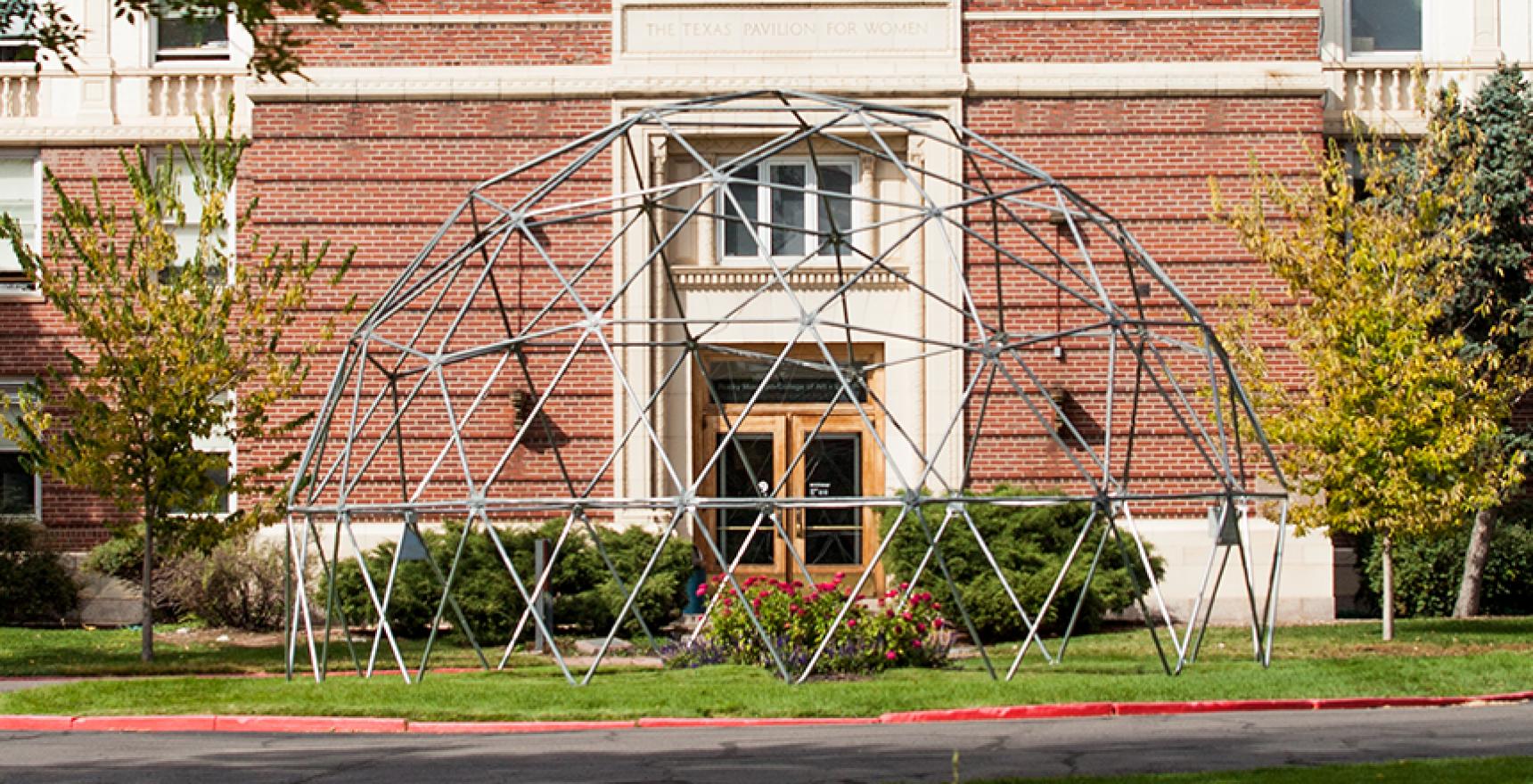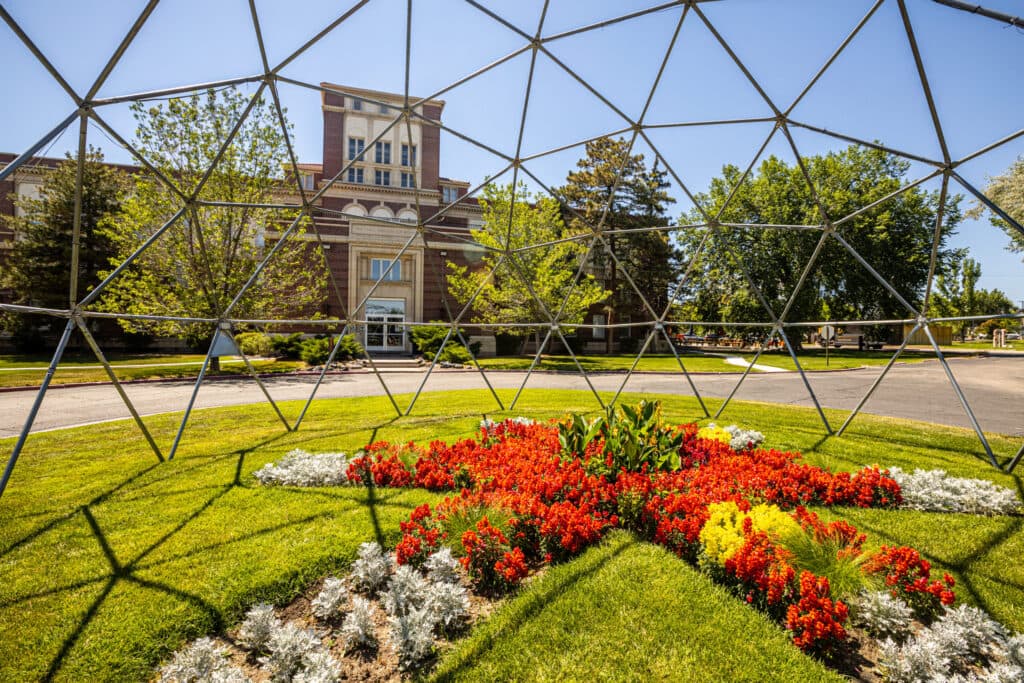If you have never been to our campus in person, you may be wondering about the significance of the dome prominently featured in our photos. RMCAD’s beautifully landscaped property features a large geodesic dome in front of the Texas Building, which serves as the main entryway to campus. It is an intriguing focal point that over the years has become somewhat of an unofficial mascot of RMCAD.
But even if you have been to campus before, you are probably still wondering about the dome. What exactly is it? How did it come to be there? What is its relation to art and design?
Bucky’s Influence
The origins of the dome lie with R. Buckminster (“Bucky”) Fuller, a renowned 20th century mathematician, engineer, architect and visionary. While Fuller was responsible for numerous inventions that were well ahead of his time, he is best known for the theory and construction of the geodesic dome.
A geodesic dome is a lightweight spherical structure based on a network of interlocking triangles or other polygons. It utilizes a complicated pattern of mathematically arranged shapes that, when their points meet, form lines that support the weight of the entire structure. This efficient design creates a self-bracing framework that is sturdy yet requires minimal materials.
Fuller was concerned with balancing the demands of our growing global civilization with the need to reduce exploitation of our natural resources. He believed that technology was the answer to our problems and aspired to invent things that would simplify and thereby improve our lives.
The Art Connection
Regarded by some as an impractical dreamer, Fuller influenced people across many disciplines. Although he never considered himself an artist, his work motivated generations of contemporary artists through its combined application of philosophy and practice—critical ingredients in any creative undertaking.
In 1965, RMCAD’s current Head of the Painting Department, Clark Richert, teamed up with a group of like-minded creatives to found an artists’ community in Southern Colorado. The community, called Drop City, was inspired by the architectural ideas put forth by Fuller. Residents lived and worked in dome houses featuring geometric panels made from inexpensive materials such as scrap metal from the roofs of cars. In 1967, Drop City won Buckminster Fuller’s Dymaxion Award for innovative and economic housing construction.
Looking to the Future by Recalling the Past
To mark the 50th anniversary of the first commercial application of Fuller’s geodesic dome and pay homage to the legacy of Drop City, RMCAD’s Institute for Experimental Studies Director Bruce Price headed up a project to build a dome for the College campus. Students from the Foundations Department assisted in constructing the 35-ft-tall metal structure and it was placed in front of the Texas Building, where it still resides today.
If the dome looks familiar to you, you might recognize it as the iconic ride at Walt Disney World’s EPCOT “Spaceship Earth” (a phrase coined by Fuller). Or perhaps it reminds you of your childhood jungle gym. But for the RMCAD community, The Dome symbolizes unity, collaboration, and the relationship between art and science.

